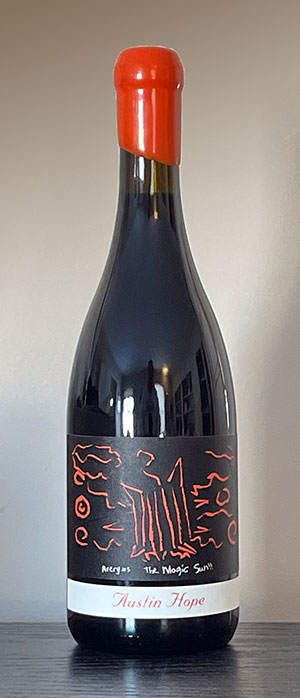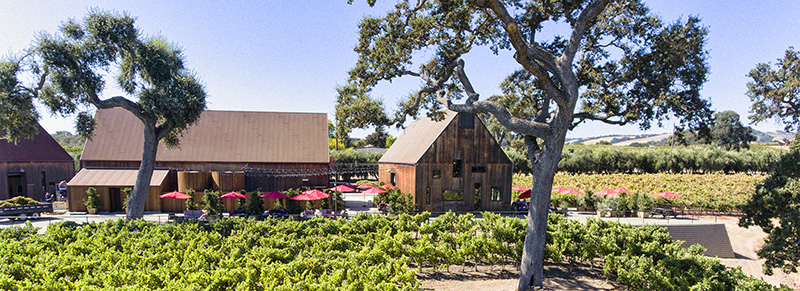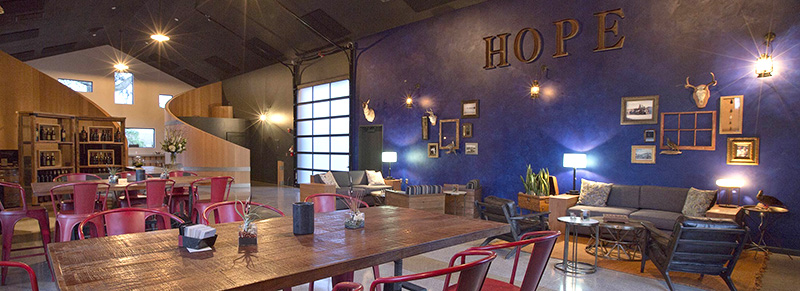
Chuck Hope and his wife Marlyn came to Paso Robles (which roughly means “passageway of oaks”) in California’s Central Coast in 1978 to farm, and eventually to start what would become Hope Family Wines. This early arrival put them on the forefront of the Central Coast becoming a world-class viticultural region. Initially, the Hopes planted apples and grapes in this then sparsely-populated area. Seeing the property’s potential for grape growing, Hope eventually replanted the apple orchards with grapes. Vine density was increased, and each vine was pruned to limit yield for better-quality fruit.
Throughout the 1980s and 1990s, the Hope family grew grapes for various wine producers. In the 1980s, the Wagner family, owners of Napa Valley’s Caymus Vineyards, turned to the Hope family to source Cabernet Sauvignon fruit for their Liberty School label. Thus began a long-lasting partnership between the two families.
Since that beginning, in Paso Robles specifically and throughout the region generally, Hope Family Wines has built long-standing relationships with over 50 growers. They coordinate with farmers to carefully limit crop yields to ensure concentrated flavors.
In 1995, the Hopes acquired Liberty School from the Wagners. In 1996, they launched Treana Winery with Chris Phelps serving as winemaker.
At about this same time, while studying fruit science at California Polytechnic State University, San Luis Obispo, the Hope’s son Austin spent some time working in Napa Valley under Caymus winemaker Chuck Wagner. This opportunity solidified his decision to pursue winemaking for his family. He became the head winemaker in 1998, and has held the position ever since. Since taking the lead as president and winemaker, Hope has helped Hope Family Wines grow from producing around 20,000 cases per year to over 300,000 cases per year. Austin’s wife Celeste, a professional photographer, produces all winery-related photography.
Hope shared, “At Hope Family Wines, we believe that it is our job to demystify wine and make it approachable. As a beverage that often accompanies food, we need to get away from the rules and intimidation, and trust our individual preferences. I am excited to see the wine industry becoming more dynamic and approachable as younger generations embrace education through online sources that are right at our fingertips.”
In 2000, the family started a limited-production label, Austin Hope (surprise!), focused exclusively on Rhone varietals grown on the family’s estate vineyard, based on the calcareous loam, marine sediment, and dense clay soil of the Templeton Gap, which has the coolest microclimate in Paso Robles. It closely matches the climate of the Rhône Valley in France, as well as Napa’s acclaimed Rutherford district. The winery’s now-mature vineyards produce Cabernet Sauvignon, Syrah, Merlot, Mourvedre, and Grenache.
In 2008, the winery introduced Candor Wines, a multi-vintage label focusing on Zinfandel and Merlot wines with fruit sourced from family-owned vineyards in Santa Barbara, Paso Robles, and Lodi. It introduced its second multi-vintage blend, named Troublemaker, in 2010.

The winery.

The tasting room.
Hope Family Wines is committed to sustainable growing practices that promote vine health, improve wine quality, and ensure that growers remain profitable. Spraying is only done when necessary, and never after August first. The number of tractor passes is kept to a minimum, protecting the integrity of the root structures and avoiding compacting the soil. The winery works actively to promote best practices in the vineyards of the growers they partner with. They use the self-assessment tools put together by the Wine Institute and the California Association of Winegrape Growers to gauge progress and identify areas for improvement over time.
Austin Hope GSM 2017
Back to blog posts: winervana.com/blog/
